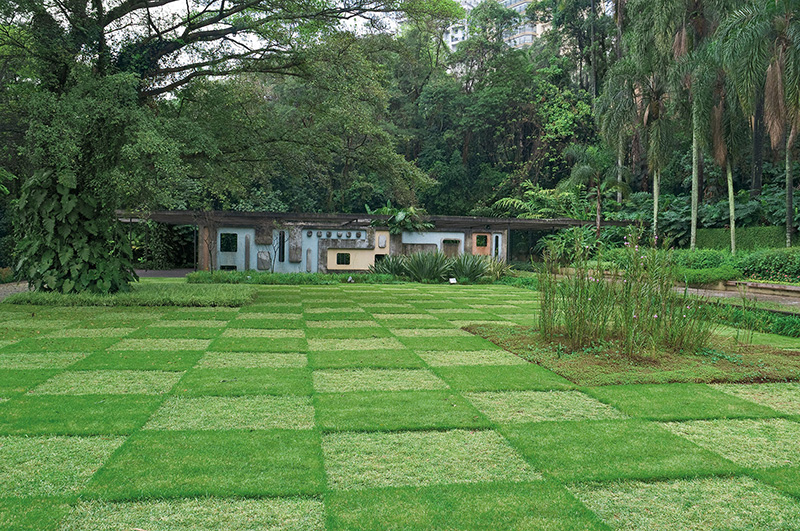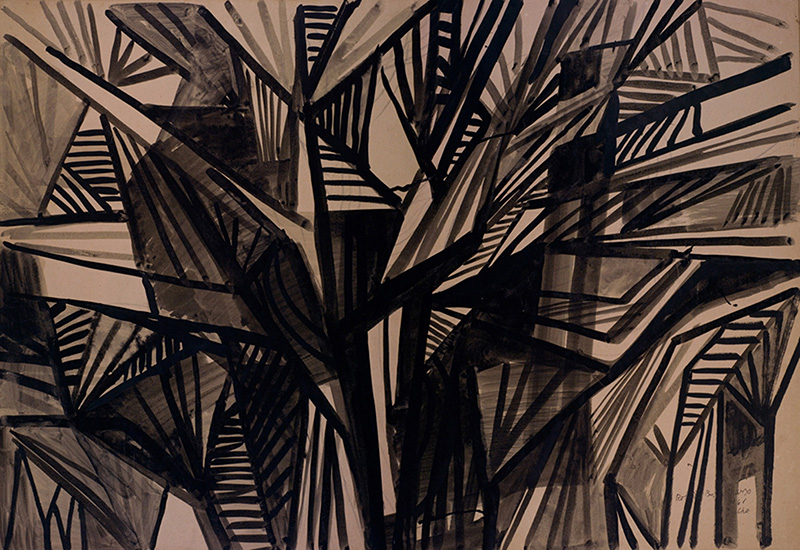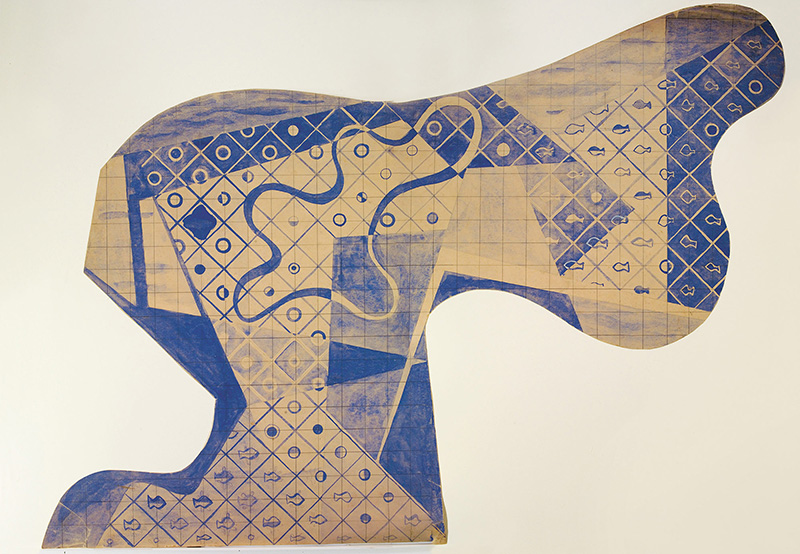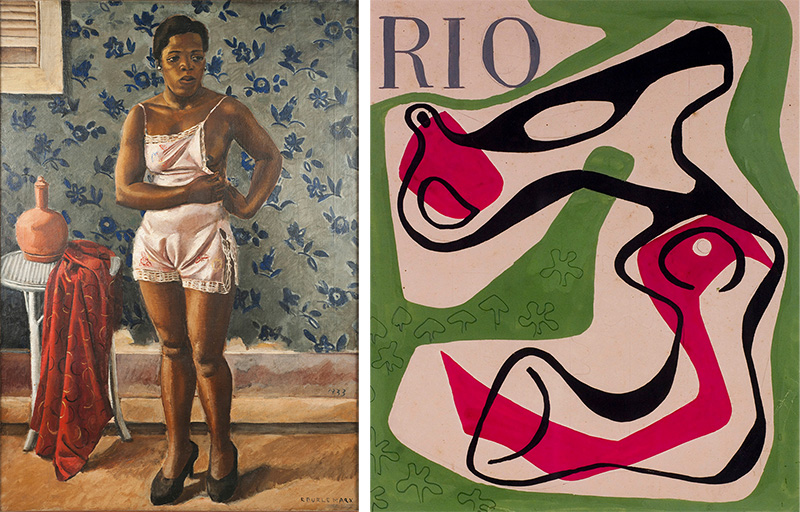ART-PRESENTATION: Roberto Burle Marx
 Roberto Burle Marx was one of the most influential landscape architects of the 20th Century. He is best known for his iconic seaside pavements on Rio de Janeiro’s Copacabana Beach, and for his abstract, geometric garden designs. But his work encompasses an enormous range of artistic forms and styles: Burle Marx was a painter and sculptor; a designer of textiles, jewelry, theater sets, and costumes; a ceramicist and stained-glass artist.
Roberto Burle Marx was one of the most influential landscape architects of the 20th Century. He is best known for his iconic seaside pavements on Rio de Janeiro’s Copacabana Beach, and for his abstract, geometric garden designs. But his work encompasses an enormous range of artistic forms and styles: Burle Marx was a painter and sculptor; a designer of textiles, jewelry, theater sets, and costumes; a ceramicist and stained-glass artist.
By Dimitris Lempesis
Photo: Deutsche Bank KunstHalle Archive
“Roberto Burle Marx: Brazilian Modernist” at Deutsche Bank KunstHalle is the first comprehensive survey exhibition in Germany of the Brazilian artist and landscape architect Roberto Burle Marx. His universal way of thinking is still inspiring generations today. In the exhibition, his work enters into dialogue with works by international contemporary artists, including Juan Araujo, Paloma Bosquê, Dominique Gonzalez-Foerster, Veronika Kellndorfer, Luisa Lambri, Arto Lindsay, Nick Mauss, and Beatriz Milhazes. In his native Brazil, Roberto Burle Marx, along with the architects Oscar Niemeyer and Lúcio Costa, is revered as a pioneer of Modernism. His garden designs for the capital Brasília and, above all, his works in Rio de Janeiro have had a lasting impact on the face of these cities. Burle Marx’s revolutionary landscape architecture, which is oriented to abstract painting, has an international reputation even today. Roberto Burle Marx did not believe in ready-made formulas, and throughout his life he sought out new experiences, while always respecting man and nature. Roberto and his long-term partner Haruyoshi Ono taught us to combine art with environmental and cultural issues, turning each landscape design into an art form that could be enjoyed by all citizens. Today we see in the big cities a growing need for green spaces and contact with nature. As Roberto said “Our actions are modified by our knowledge and are at the same time shaped by the world around us. Sciences, biological sciences, humanities, and artistic knowledge all go into what a comprehensive understanding can create in landscape architecture”. During his over 60-year career, he designed more than 2,000 gardens around the world. Among his most important are the gardens of the Ministry of Education and Health built by Niemeyer, Costa and Le Corbusier (1938), Flamengo Park (1961), and the wavelike paving of Avenida Atlântica (1970) in Copacabana.
Info: Curators: Jens Hoffmann and Eva Feld, Deutsche Bank KunstHalle, Unter den Linden 13-15, Berlin, Duration 7/7-3/10/17, Days & Hours: Daily 10:00-20:00, www.deutsche-bank-kunsthalle.de






